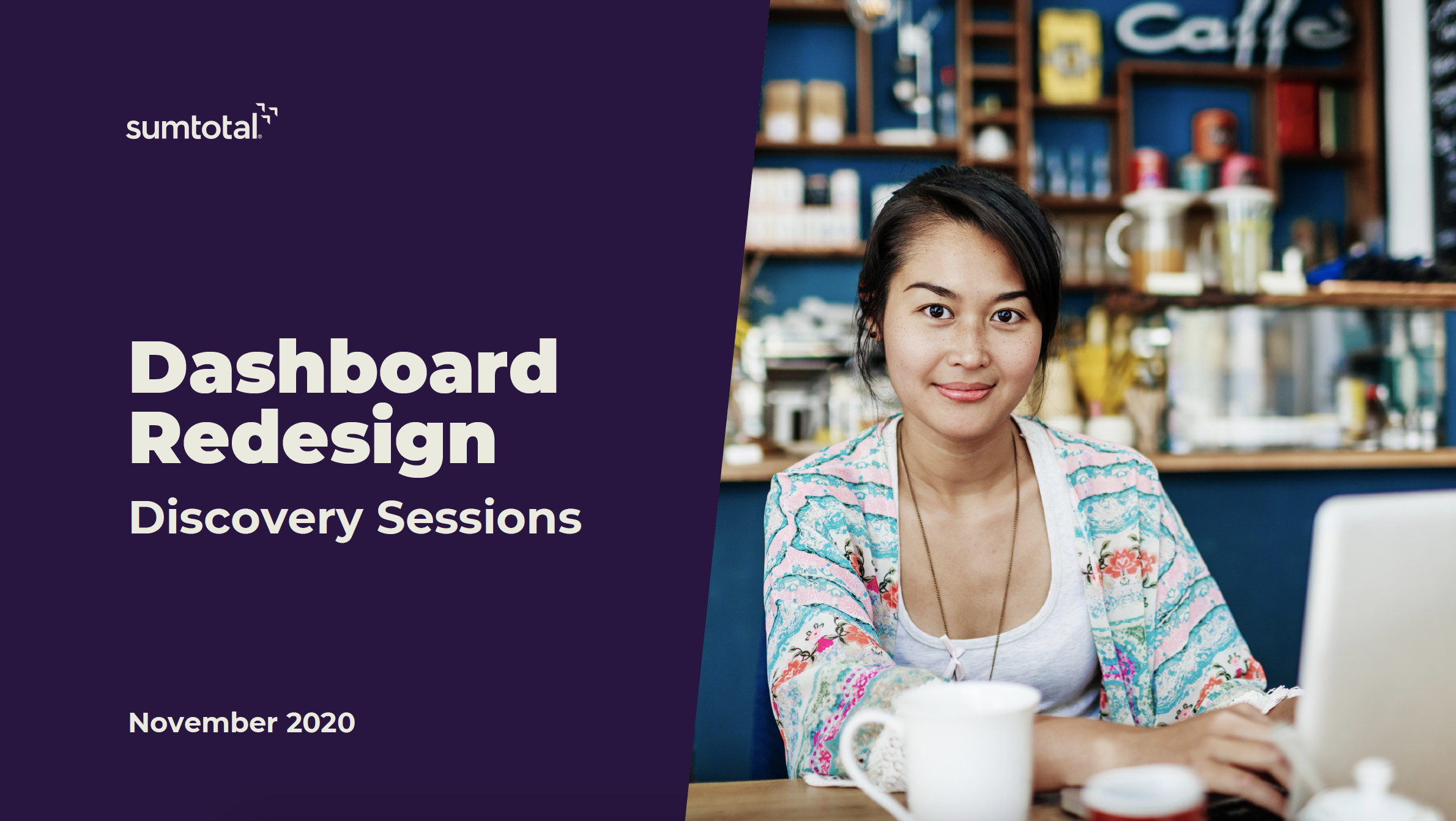
Learning Management - Dashboard Designer
One of the most utilized features within our Learning Management application are the Dashboards. Our customers build dashboards to customize the experience and provide users with quick and easy access to relevant information and content.
Teams Involved
Product, UX Design, UX Research, Engineering
Methods
Discovery Sessions | Concept Validation | Survey
Kickoff
Like most projects, we started with a kick off meeting that included all relevant cross-functional team members. For this project, that included a Product Manager, two UX Designers, the Development Squad and myself. We discussed the purpose of the project, use cases being considered, and open questions the Product and UX team had.
It was determined we would begin with Discovery Research to get a better understanding of how our customers were currently using the Dashboard features, what they found easy to use, where the pain points were, and any feature gaps they would want to see considered as we redesigned the functionality.
Discovery Sessions
We spoke with 11 organizations about their usage of Dashboards within our system. We asked participants to demo their environment and walk us through some of their top used dashboards and the process that they went through to create said dashboards.
We identified many different business needs that dashboards are used to solve, as well as what features and functionality users would benefit from having added.
Concept Validation
Leveraging the debrief from the Discovery Sessions, I teamed up with UX design to help brainstorm and define the features and functionality that would provide an intuitive and easy to use interface to build and manage their dashboards. Once the “Dashboard Designer” concept was created, we took it to users for feedback.
Research sessions were paired with a “Widget Prioritization” survey in order to validate which features and widget offerings would be most valuable and most used by organizations. Fourteen organizations provided feedback which was analyzed and presented to Product, UX, and Engineering. Designers iterated on the design and delivered it to Product and Engineering for development.
NEXT STEPS
Usability Testing
Once developed, plan to complete task based usability testing and observation to obtain feedback from users on functionality and ease of use. Feedback will drive additional iterations and future work to ensure easy adoption and positive user experience.



